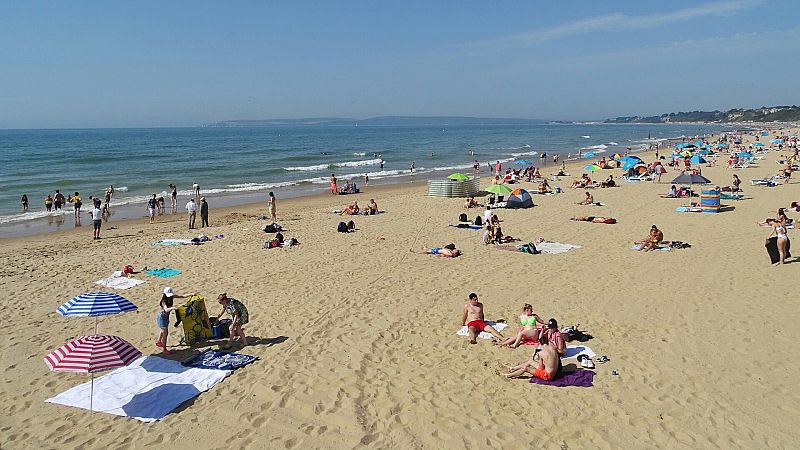
The seas around the UK are heating up fast, and scientists are raising the alarm.
Earlier this week, the BBC reported that parts of the North Sea, English Channel and Irish coast are now as much as 4°C warmer than average, in what UK scientists are calling a “super intense” marine heatwave.
With surface temperatures already the highest ever recorded in April and May since monitoring began 45 years ago, researchers are warning of potential knock-on effects for marine life, as well as the general well-being of beachgoers.
And it’s not just the ocean feeling the strain.
The UK is coming to the end of one of the warmest, driest springs in more than a century. Forecasts suggest this could be a sign of an even hotter summer to come.
What is a marine heatwave?
Marine heatwaves happen when sea temperatures exceed seasonal averages for at least five consecutive days. They usually last about two weeks. This one has lasted more than two months, compounding the effects of human-induced climate change.
In the North Atlantic, sea surface temperatures have been increasing by around 0.3°C per decade over the last 40 years, according to the Met Office.
“Before we started having this exceptional weather this spring, the waters were already in a hotter state,” Dr Ségolène Berthou of the UK Met Office told the BBC.
Why is this happening?
The hotter sea temperatures are in part a result of the UK’s exceptionally warm, dry spring.
In an article published in The Conversation, Matthew Patterson and Simon H Lee, both researchers at the University of St Andrews, explained that a high-pressure system has prevented cooler, wetter conditions from moving in – a “blocked” or “stuck” weather pattern that has led to devastating wildfires and sowed chaos across UK farmlands.
The weak winds and strong spring sunshine that have accompanied this high-pressure system have allowed heat to build on the ocean’s surface, too.
What are the risks of a long marine heatwave?
Though marine heatwaves are still a relatively new phenomenon for the UK, they’re expected to become more frequent and intense as the climate warms.
Scientists are concerned the current flare-up may disrupt marine ecosystems, altering breeding cycles, enabling blooms of harmful algae or attracting jellyfish that thrive in warmer waters.
Jellyfish sightings off UK coasts jumped 32 per cent following a marine heatwave that raised sea temperatures up to 4°C above average, according to the BBC.
So far, the temperatures have not exceeded critical thresholds for mass marine die-offs. But the UK may only be seeing the beginning.
Researchers caution that the long-term implications are unclear, since marine heatwaves have rarely affected cooler British waters.
Is summer about to get even hotter?
While the current marine heatwave may weaken slightly in the coming days as weather patterns shift, scientists say this could be a temporary dip.
Forecasts suggest warm, dry conditions are likely to return, raising the risk of more extreme temperatures later this summer – both on sea and land.
Oceans act as vast heat reservoirs, and warmer waters can push up air temperatures as sea breezes carry heat inland. That’s what happened in May last year, when a brief marine heatwave contributed to unusually high land temperatures across the UK.
With ocean heat running high and El Niño now fading, forecasters expect 2025 to rank among the hottest years on record. The Met Office has even warned of “more than double the normal chance” of a hotter-than-average summer.
As summer looms, the sea around Britain may offer an early warning of what’s to come.







